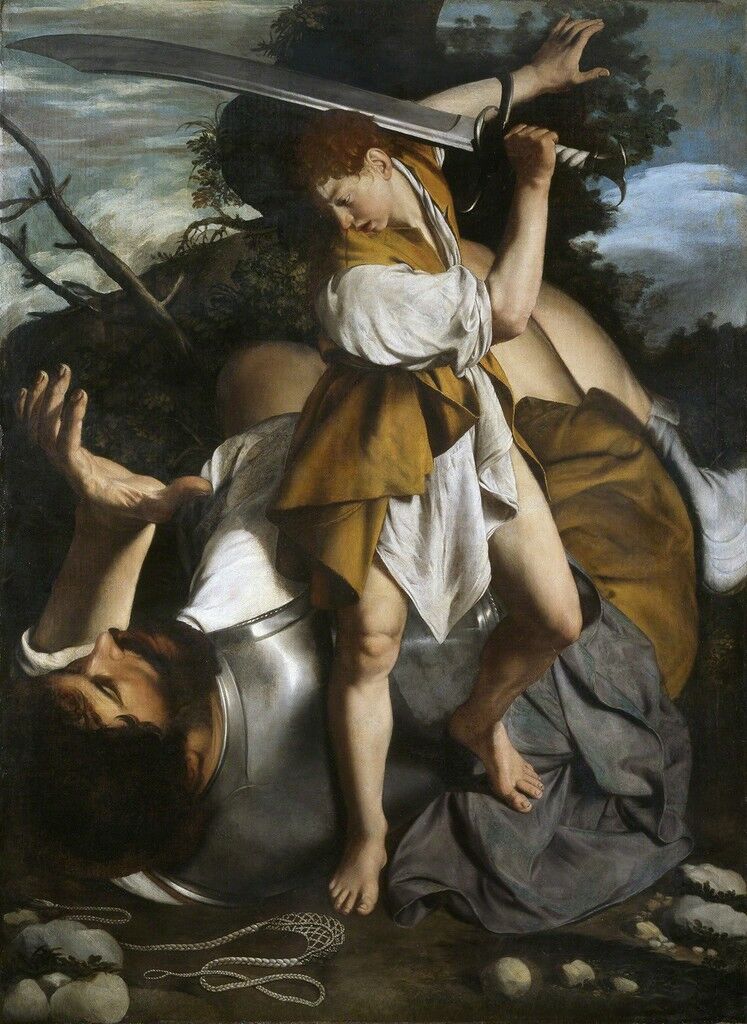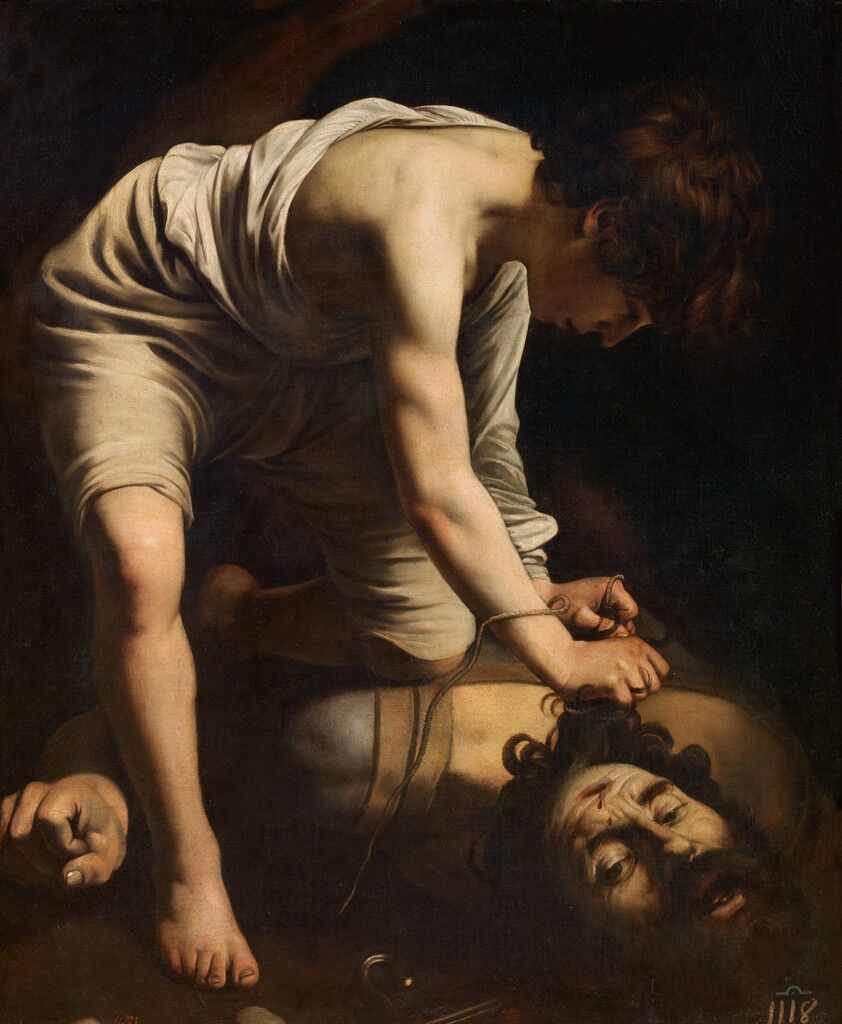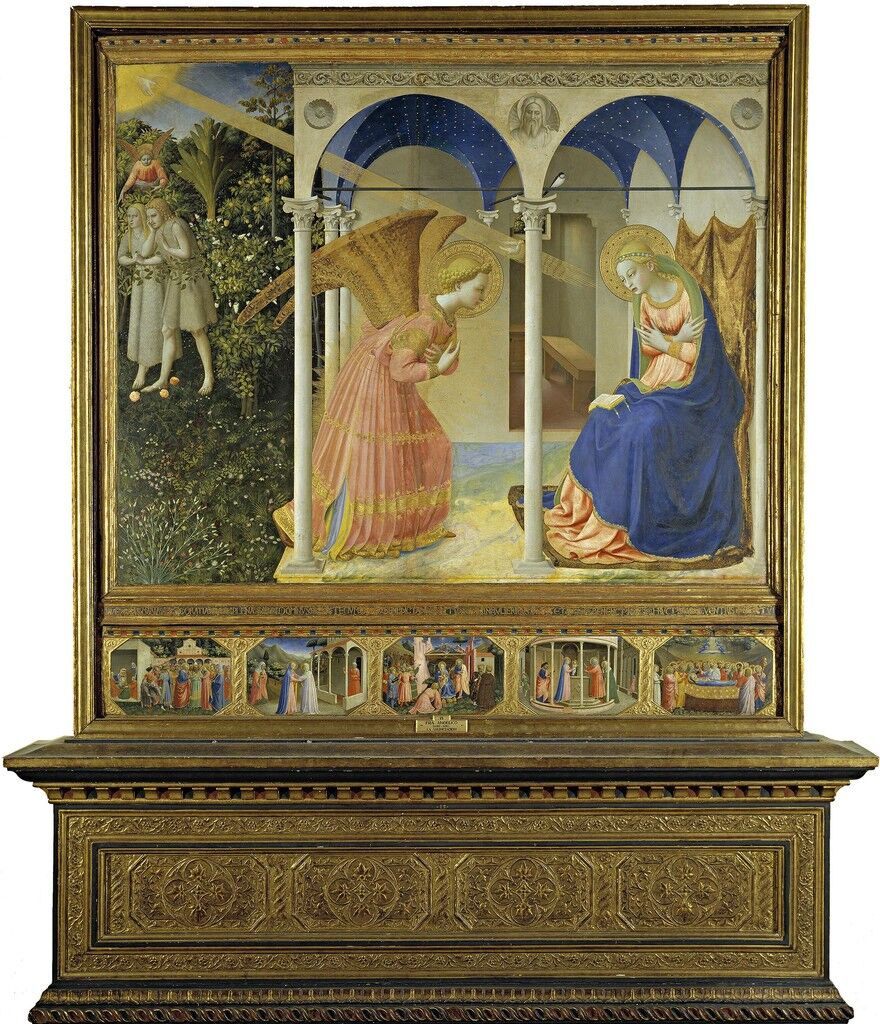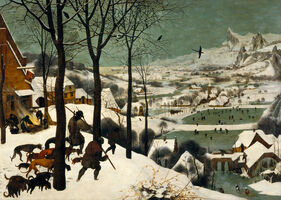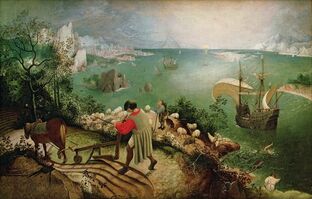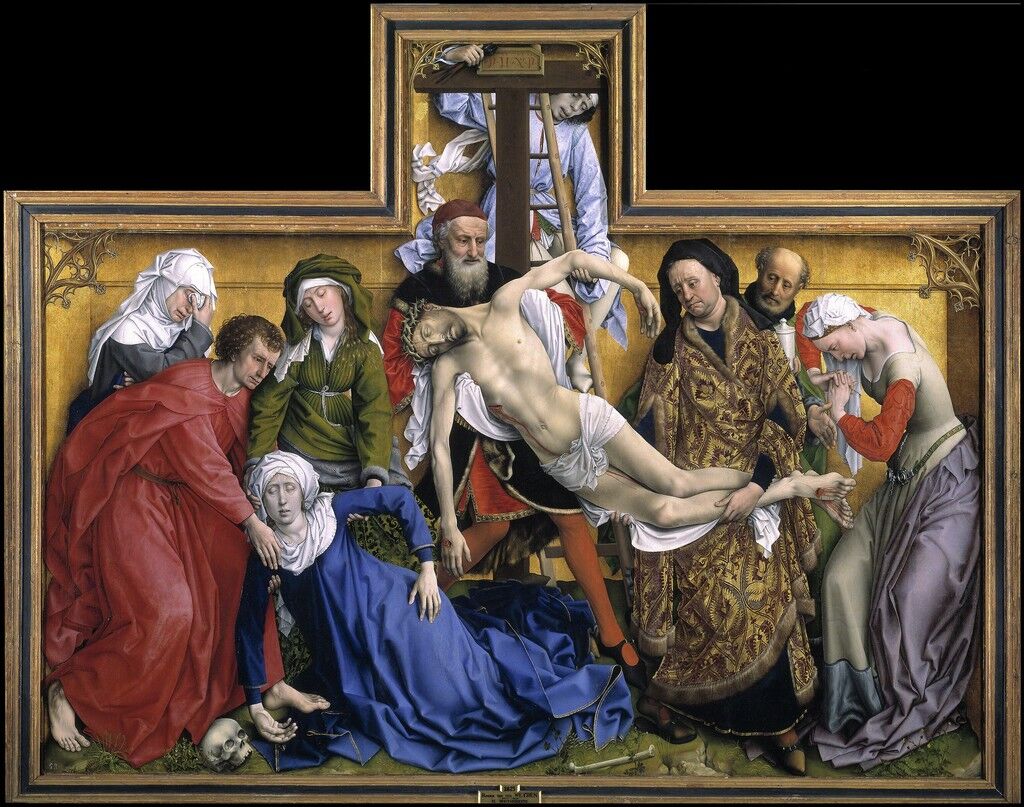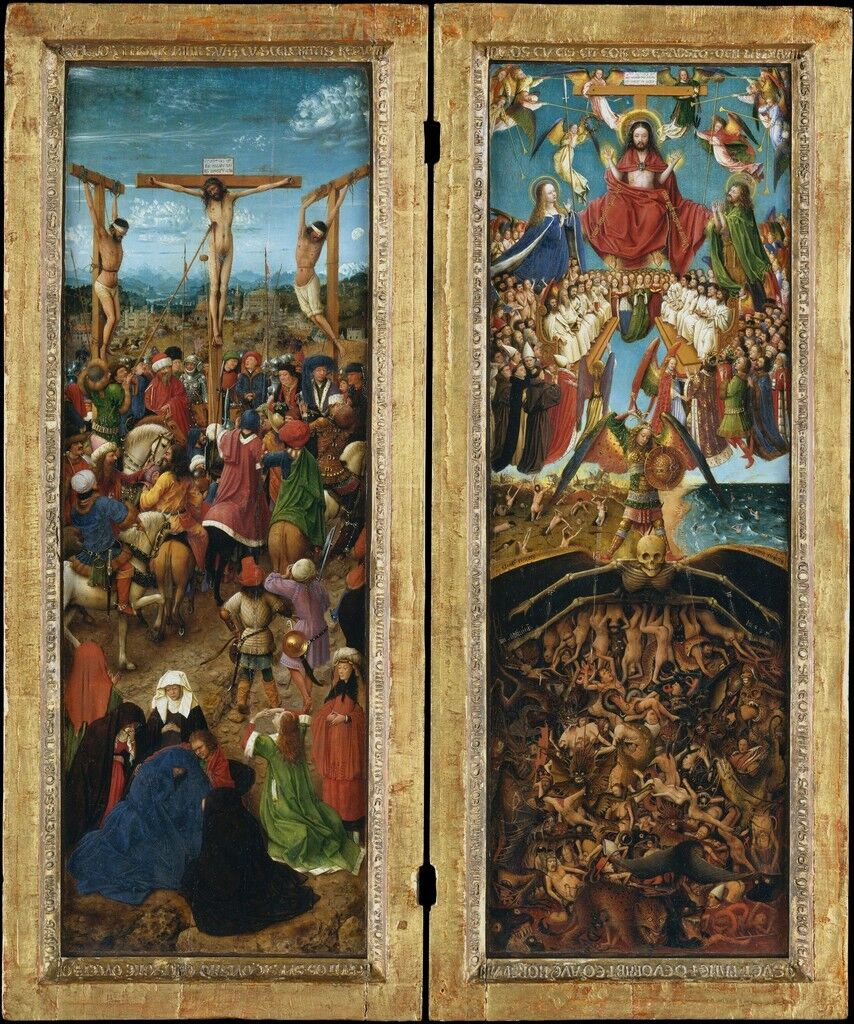To a contemporary audience, the biblical narratives that appear in Western art from the Middle Ages through the modern era can appear impenetrably obscure. The ubiquity of New and Old Testament images in art originates from the need to visually illustrate and spiritually inspire largely illiterate audiences in an emotional—rather than intellectual—manner.
There is a hierarchy to these narratives that was primarily dictated by the physical spaces in which they were to appear. Scenes considered most important occupied prominent focal points of a church or altarpiece, with those of lesser significance radiating outward. Take the 14th-century fresco cycle that originally decorated the apse of the Porro oratory at Mocchirolo. The very choice of biblical passages and their placement in the chapel indicates the spiritual values of the people who commissioned the decoration. The Crucifixion occupies the largest space on the back wall; above this scene, on the barrelled ceiling, Christ holds his hand up in the act of blessing, or judgment, while narratives featuring Christ’s early life appear on each side wall.
The visual material offered by the Bible is vast, and although much of art history attends to Christian themes, this list offers an introduction to the most essential religious stories in Western art. In the modern era, artists have adapted these stories for new uses, whether to comment on current events or as allegories for their own agendas. Thus, the same scenes repeatedly appear—in radically different guises—throughout art history as trends develop and skills change.
Creation and Expulsion from the Garden of Eden
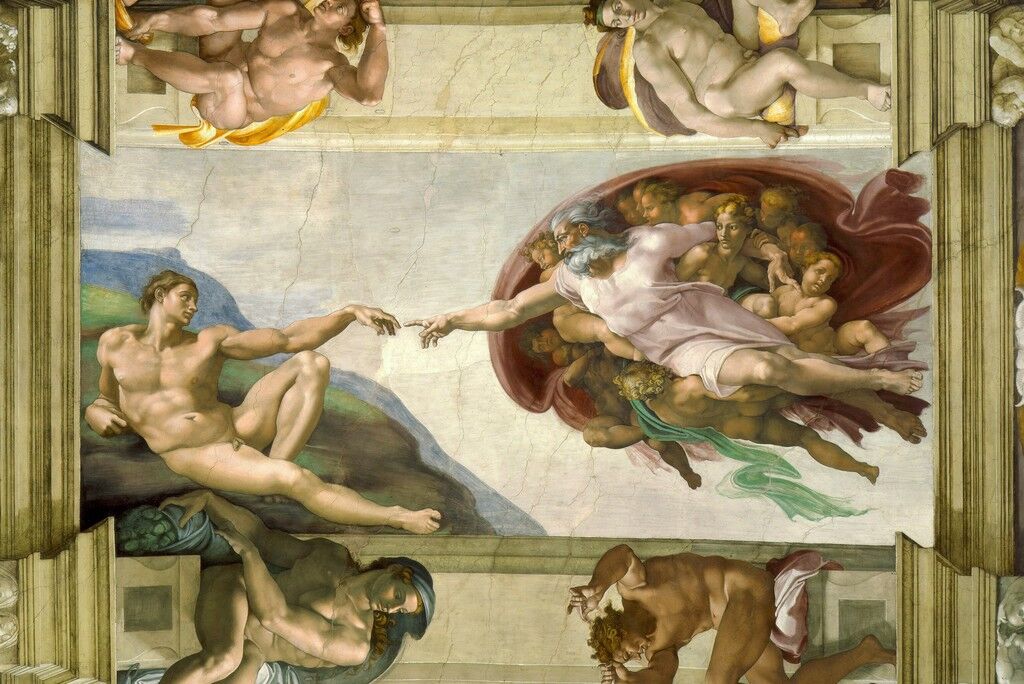
Michelangelo Buonarroti
Creation of Adam, Sistine Chapel ceiling, 1511-1512
Sistine Chapel, Vatican
According to the Old Testament, God created the world in seven days. Much
, however, focuses on the final creation of man. One iconic image has come to exemplify the divine creation of humanity:
’s Creation of Adam (1511–12), the central motif in the Sistine Chapel ceiling. Although it has become one of the most parodied motifs in art history, the fresco’s incredible singularity stems from its emotionally charged imagining of the moment God, unusually represented in human form, gives life to mankind via Adam’s outstretched fingertips.
More frequently, artists favor lush evocations of Adam and Eve in their Edenic paradise, often surrounded by animals.
made several versions on this theme; all relish in brilliant green foliage and flowers—as well as a socially acceptable opportunity to engage with the female nude—with finely rendered wildlife including lions, stags, and boars. His Adam and Eve (1526) shows the decisive moment that begets original sin: Eve holding the forbidden fruit out to a bewildered-looking Adam.
Moses and the Ten Commandments
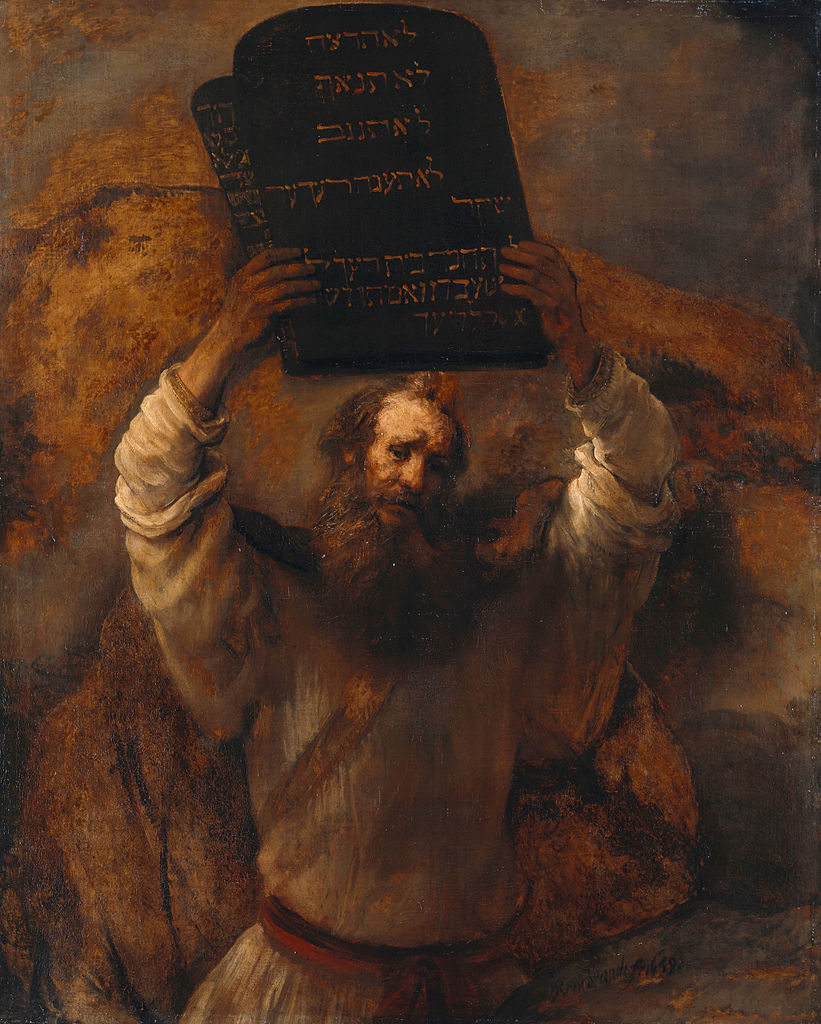
Rembrandt van Rijn, Moses Smashing the Tablets of the Law, 1659. Courtesy of Wikimedia Commons.
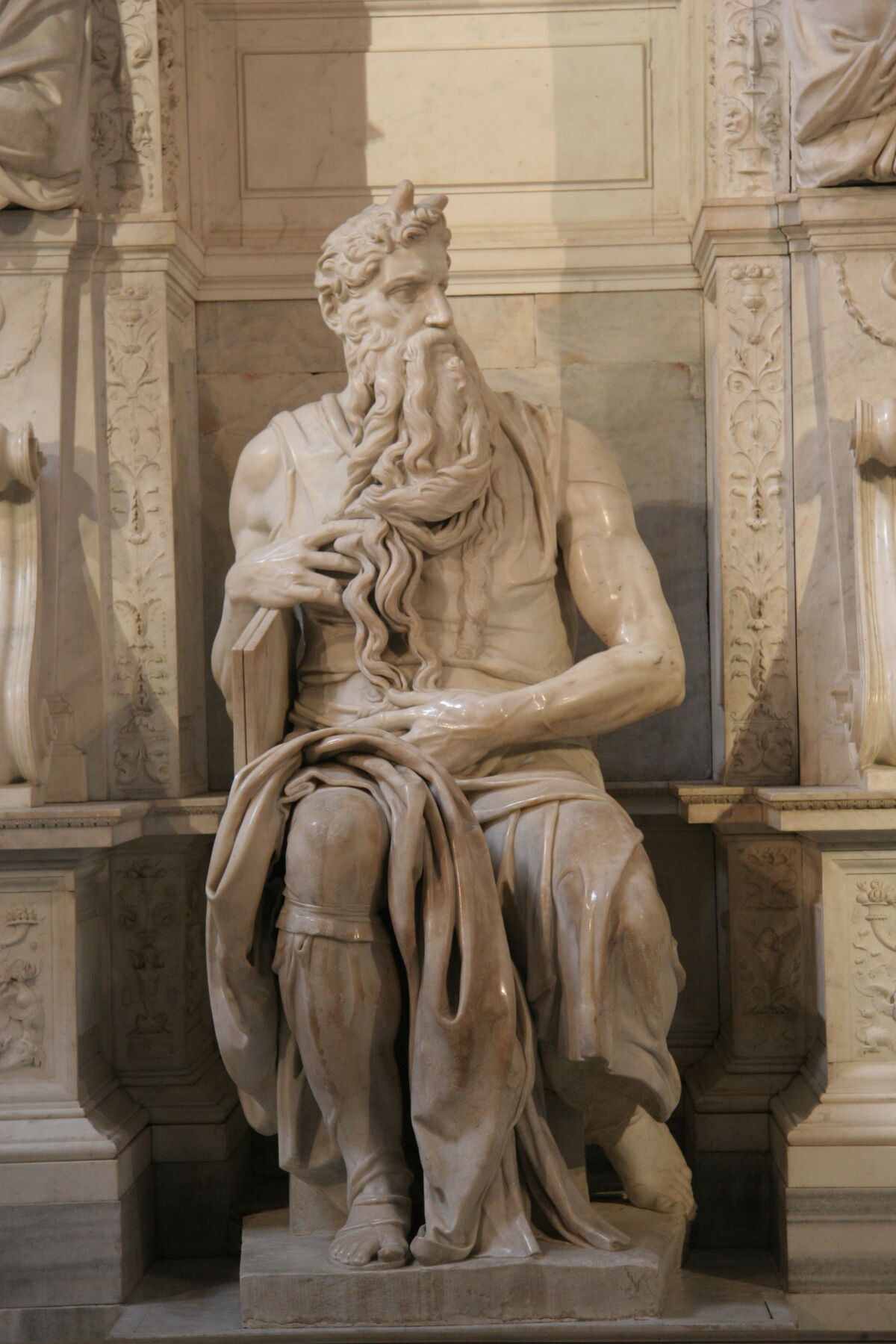
Michelangelo Buonarroti, Moses, 1513–15. Image via Wikimedia Commons.
After Moses delivers the Israelites out of slavery in Egypt, he receives the Ten Commandments from God on Mount Sinai. Descending from the mountain, Moses discovers that his people have created a false idol to worship, and he smashes the stone tablets in anger. This overwrought moment is often depicted as a stormy scene with smoke and fire.
’s Moses Breaking the Tablets of the Law (1659) isolates the bearded patriarch within a closely cropped frame, the tablets held above his head, ready to crash down. The muted palette and Moses’s resigned expression serve as intimate counterpoints to the oncoming violence of his reproach.
In a much-contested passage from Exodus, Moses is described as having two beams of light emanating from his head. When translating the text from Hebrew into Latin, the scholar Saint Jerome interpreted the line to mean “grew horns” rather than light. This understanding informed many
and
depictions of Moses (as well as a persistent anti-Semitic stereotype). A notable example is Michelangelo’s Moses sculpture (1513–15), made for the tomb of Pope Julius II in San Pietro in Vincoli in Rome.
David and Goliath
A shepherd boy who became the second king of Israel, David is beloved for uniting the country’s two kingdoms and for capturing Jerusalem for its capital. In Christian theology, he is often imagined as a prefiguration of Christ, and according to the Gospel of Matthew, he was Jesus’s direct ancestor. The story of the youthful David defeating the giant Goliath during a battle between the Philistines and Israelites has been a popular subject for centuries; the theme itself has become a byword for bravery and triumph against the odds.
’s David and Goliath (1605–08) plays with the perspectival curiosity of the diminutive David slaying the oversized Goliath. David, blade poised above his head, is ready to behead the supine giant, whose massive frame takes up most of the canvas.
’s treatment of the subject, David with the Head of Goliath (1598–99), shows the calm moment after the action, as the victorious David makes to collect his trophy. Famously, Goliath’s severed head is recognizable as Caravaggio’s self-portrait.
Judith and Holofernes
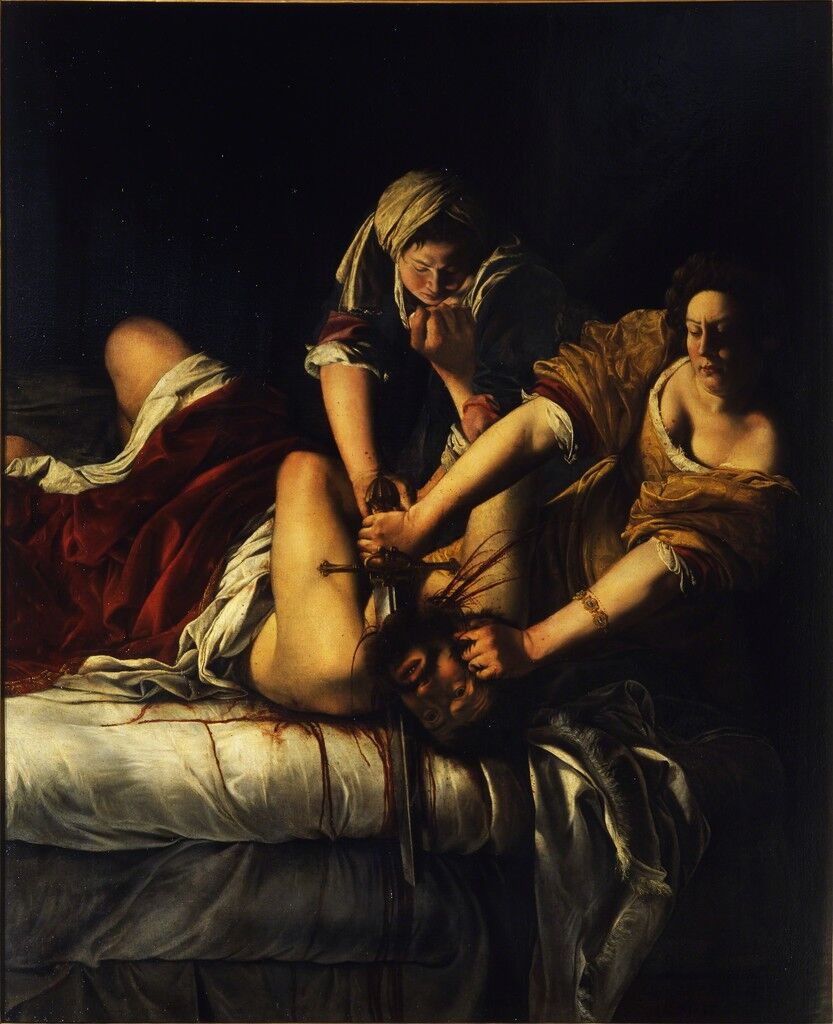
Artemisia Gentileschi
Judith and Holofernes, ca. 1620
Uffizi Gallery, Florence

Cristofano Allori, Judith with the Head of Holophernes, 1613. Image via Wikimedia Commons.
The eponymous heroine described in the deuterocanonical Book of Judith is a favorite femme fatale for artists, especially during the
period. As the story goes, the night before the Assyrian army was to lay siege on the Jewish city of Bethulia, Judith, a beautiful Jewish widow, plots to seduce the Assyrian general Holofernes. She enters his tent—he quickly falls asleep drunk—and decapitates him with his own sword, ending the battle before it begins.
In
’s Judith and Holofernes (ca. 1620), bright red blood spatters the white sheets as Judith mercilessly decapitates Holofernes, shown helpless and inverted on his bed. Gentileschi has become somewhat of a feminist icon; as she herself suffered sexual violence, it is difficult to separate her own story from the look of grim determination on the heroine’s face here.
’s Judith with the Head of Holofernes (1613) instead shows Judith with a calm demeanor, victoriously clutching the severed head. Interestingly, the head is again a self-portrait of the artist (the work may be autobiographical: It’s rumored that Allori painted it following the end of a love affair).
The Annunciation
The image of the Annunciation—in which the angel Gabriel appears to the Virgin Mary and announces her divine pregnancy—is defined by the interaction between the two figures across the picture plane, which emphasizes God’s difficult-to-see role in the Immaculate Conception. In
’s TheAnnunciation (1426), Gabriel enters Mary’s architectural enclosing and kneels before her. The picture plane is bisected by a near-solid looking shaft of light, which bears the dove of the Holy Spirit toward Mary, the hand of God visible at the origin of the light ray in the top left corner. In most Annunciation scenes, as in this rendering, the Virgin is shown at prayer, with an expression of humility. Fra Angelico’s version is particularly notable for the inclusion of Adam and Eve in the garden outside, a foreshadow of the unborn Christ’s future sacrifice.
The Nativity, or the Adoration of the Magi
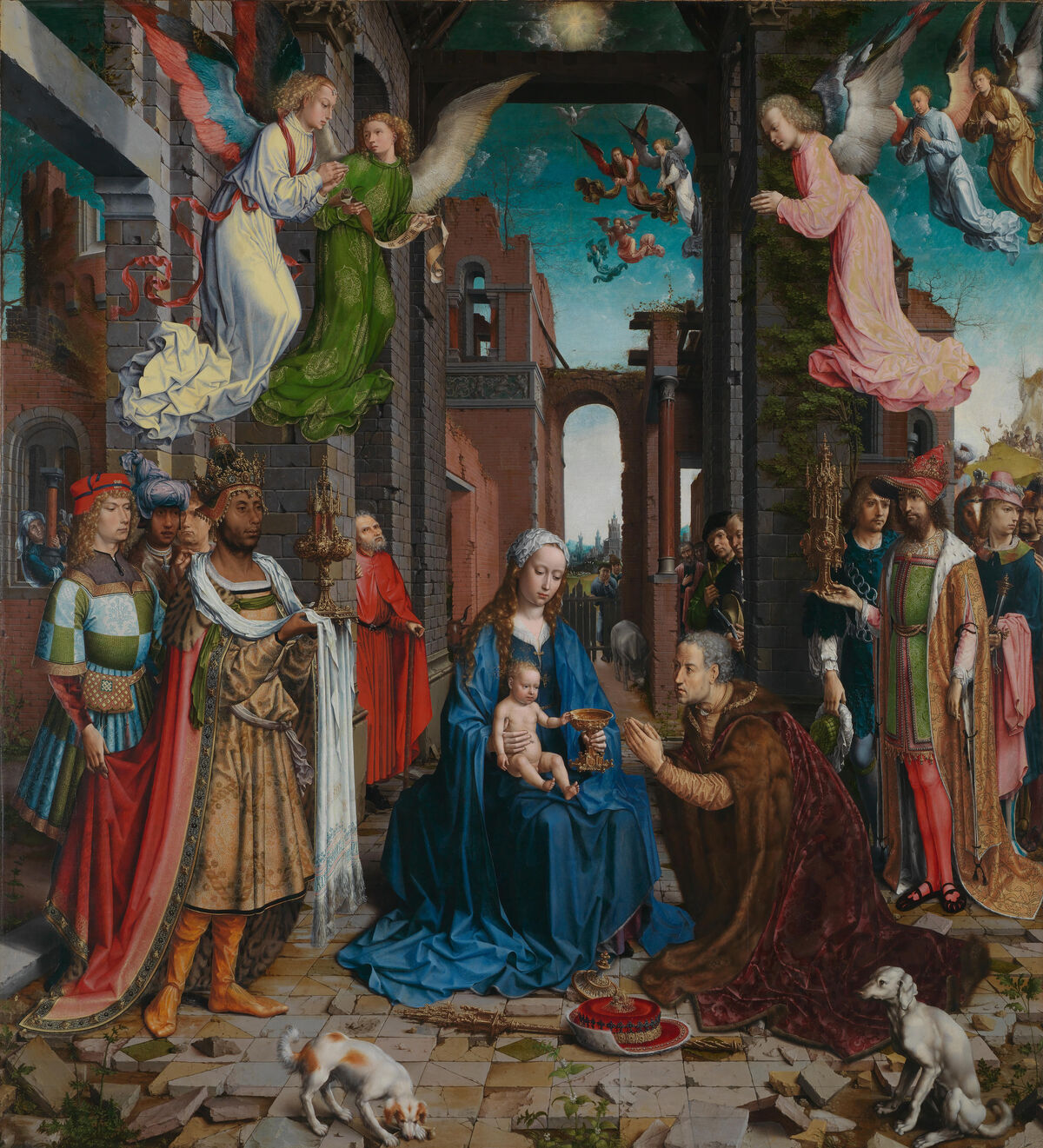
Jan Gossaert, The Adoration of the Kings, 1510–15. Image via Wikimedia Commons.
What little description exists of the Nativity, briefly detailed in the Gospels of Matthew and Luke, has been crystalized by artists into a tradition in which the infant Jesus, lying in a humble manger, is attended by the Virgin; three wise men, or magi, bearing gifts; and animals such as oxen and sheep. Renaissance treatments tended to dress the wise men, astrologers of the Persian court, in fashionable court clothes of the time.
’s minutely detailed Adoration of the Kings (1510–15) is no exception. But while many works stick to the traditional rustic setting, Gossaert here sets the scene among classical ruins—thick flagstones crumbling beneath the figures’ feet—to literally symbolize the crumbling of the pagan order and the birth of a new spiritual leadership.
Massacre of the Innocents
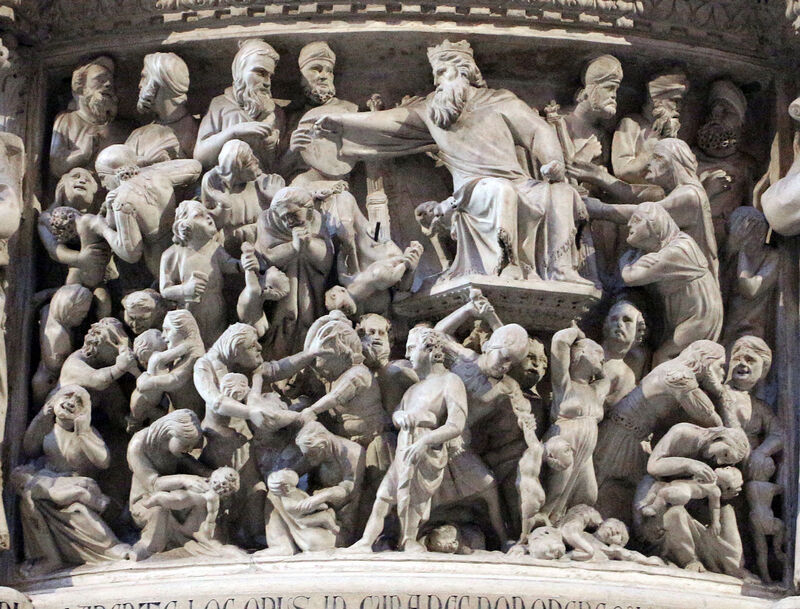
Fearing that the infant Christ, prophesied as the new king of the Jews, would usurp his throne, Herod the Great, the king of Judea, ordered the murder of all Bethlehem males under two years old. This violent scene has provided artists the opportunity to flex their melodramatic muscles; the brutal slaughter of infants by Herod’s soldiers is usually shown in the king’s courtyard, with desperate, wailing mothers protesting in vain.
’s carved pulpit in the Church of Sant’ Andrea in Pistoia, Italy, is a gorgeous example of densely packed bodies frozen in this barbarous chaos.
Unusually,
’s interpretation (ca. 1565–67) takes place in a snowy, Netherlandish hamlet. The artist deliberately chose a contemporary setting so viewers would recognize the biblical event as taking place in a town like their own. Instead of showing a pandemonious mass of figures,
’s rendering (1625–32) strikingly opts to focus on just one imperiled child and his mother; a soldier crushes the infant underfoot, his other hand tearing the mother away by the hair in a bold and unflinching act of cruelty.
The Last Supper
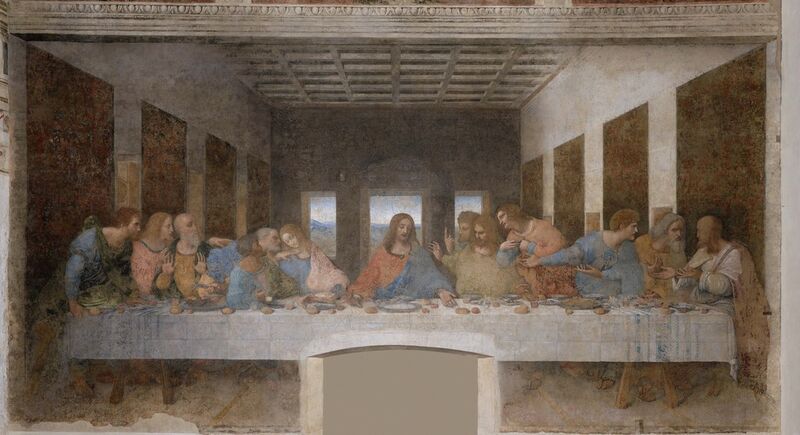
Without a doubt, the most famous example of the Last Supper—when Christ celebrates Passover with the 12 disciples in Jerusalem, announcing that one of them will betray him—is the now-crumbling fresco (1495–98) by
in Santa Maria delle Grazie, Milan. Though a relatively straightforward scene, treatments such as this demonstrate the Last Supper’s potential for drama—the seemingly innocent moment right before Jesus’s fate will be sealed.
This motif was elaborated upon by
in his Last Supper (1592–94), in the Church of San Giorgio Maggiore in Venice. While many earlier depictions, including Leonardo’s, show the disciples seated on both sides of the table with Jesus at the center of the composition, here, the table is turned at a dramatic angle, perpendicular to the picture plane. The exaggerated perspective allows the minor, secondary figures to take a more active role, as Christ breaks bread in the background.
The Crucifixion
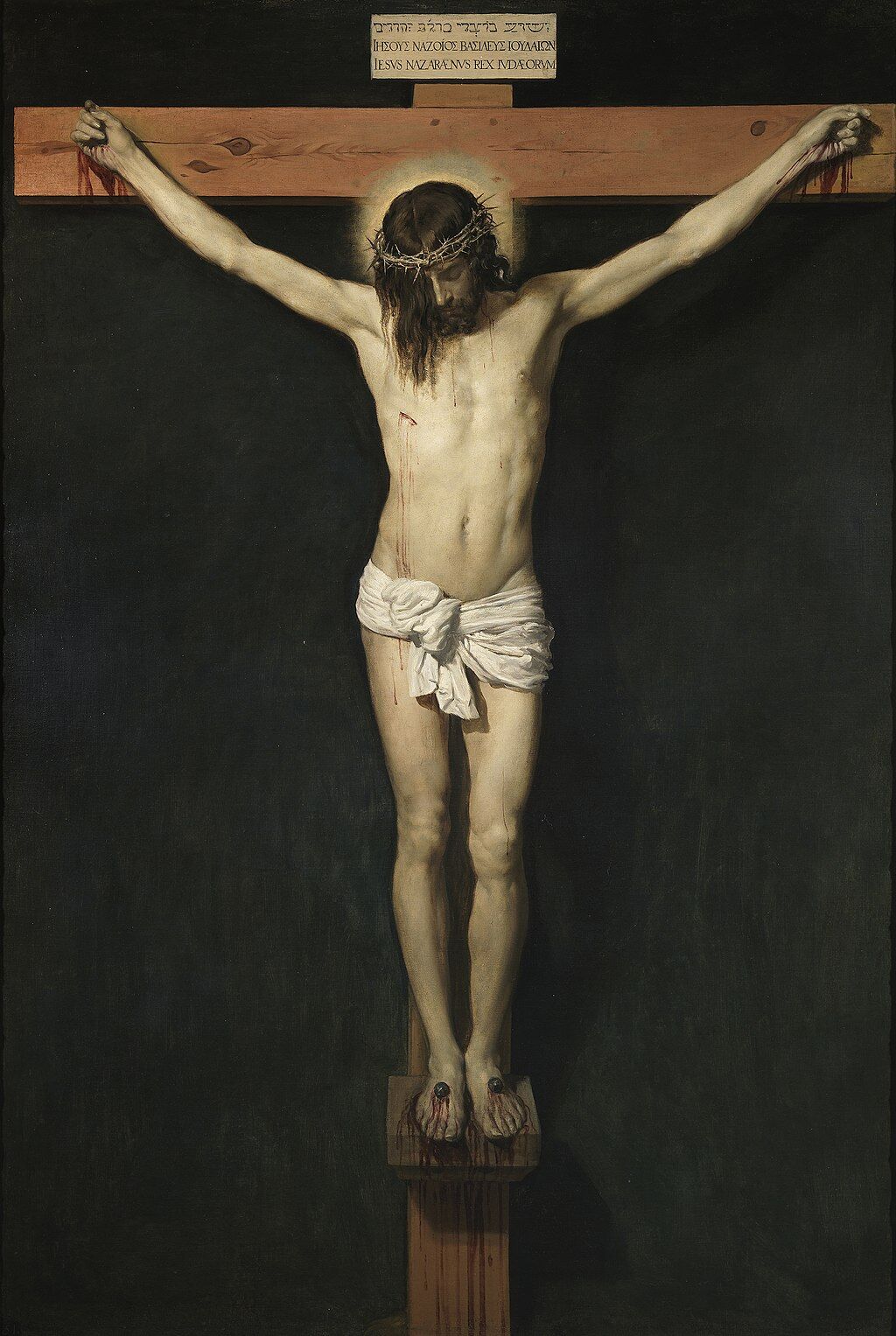
Diego Velázquez, The Crucified Christ, 1632. Image via Wikimedia Commons.
The sacrifice of Christ’s life, rather than his birth, holds the most significance in Christian theology. Typically, a Crucifixion scene features Christ suspended on a cross with mourners—the Virgin Mary, Mary Magdalene, and John the Baptist—at his feet. He is also frequently flanked by the two thieves crucified alongside him. Additional symbols also recur, such as a pelican plucking its breast—a reiteration of sacrifice—or a skull, supposedly Adam’s, at the foot of the cross—a symbol of original sin.
’s Christ Crucified (1632) strips back the scene to include only Christ, frontally lit, a mild halo of light emanating from his bowed head. This pared-down composition continues to inspire artists. Modern interpretations include
’s Three Studies for Figures at the Base of a Crucifixion (1944) and
’s Crucifixion (Corpus Hypercubus) (1954), which subvert the trope to explore contemporary sources of human suffering.
The Descent from the Cross, or The Deposition
The removal of Christ from the cross following his death has been ambitiously developed by artists looking to experiment with composition, especially complexly intertwining figures.
’s treatment, shown in the central panel of The Descent From the Cross triptych (1612–14) in Antwerp’s Cathedral of Our Lady, revels in the limp, contorted body of Christ and the physical pull of his weight on the attendant figures—including Joseph, the Virgin, and Mary Magdalene—struggling to carry him down from the cross. Christ looks as if he is falling out of the frame, a physical manifestation of the mourners’ heavy grief. Likewise, the T-shape of
’s The Descent from the Cross (1435) is echoed in the positioning of Christ’s arms, and again in the bent arms of the fainting Virgin. Particular emphasis is placed on the grieving faces, their tears realized with fine brushwork.
The Last Judgment
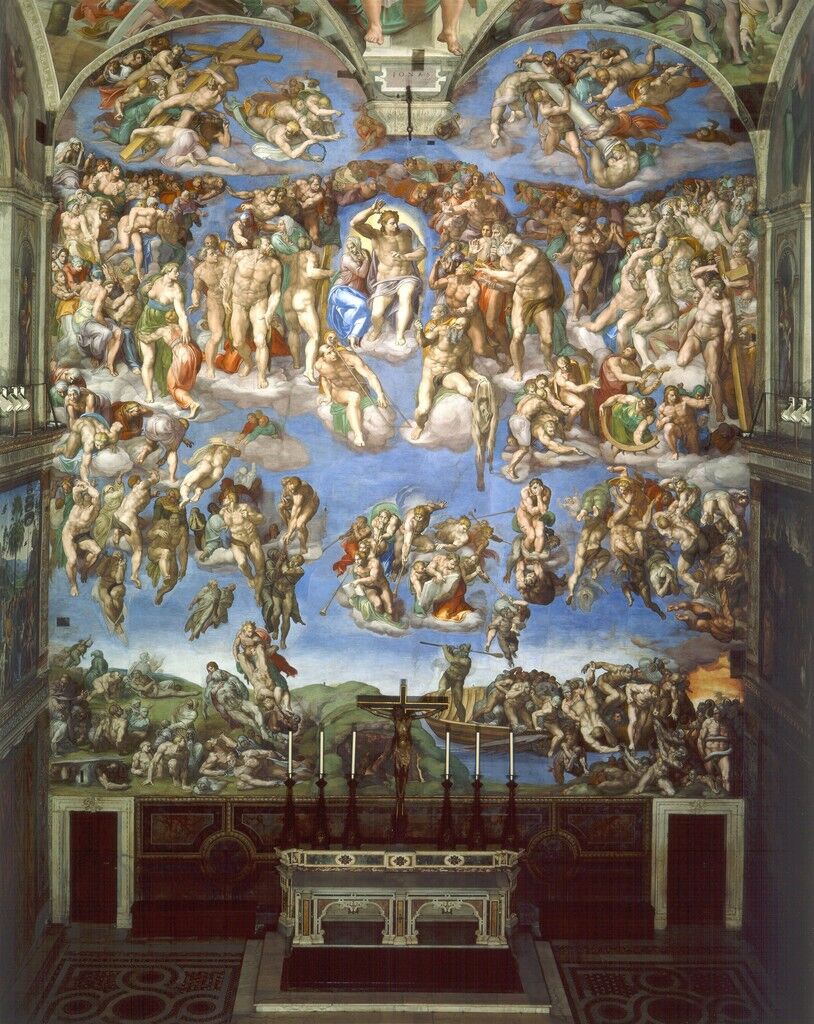
Michelangelo Buonarroti
Sistine Chapel, Vatican
The Last Judgment forms a major component of medieval church decoration; whole walls can be devoted to this scene from the trippy Book of Revelation, which describes judgment day, or the second coming of Christ. Enthroned and surrounded by the Apostles, Christ judges the souls of humankind. While the saved are directed to heaven by angels, it is the terrible beasts and tortures awaiting the damned down below that have inspired artists’ most inventive creations. Sometimes corpses rise from their graves, or a mouth of hell is shown swallowing the dead.
’s Last Judgment (1300–05) in the Scrovegni Chapel in Padua imagines a blue demon eating and then excreting the souls.
’s Last Judgment panel (ca. 1440–41) is a particularly concentrated vision of twisted bodies and monsters crammed together under the cackling gaze of a straddling, winged skeleton.
Olivia McEwan

